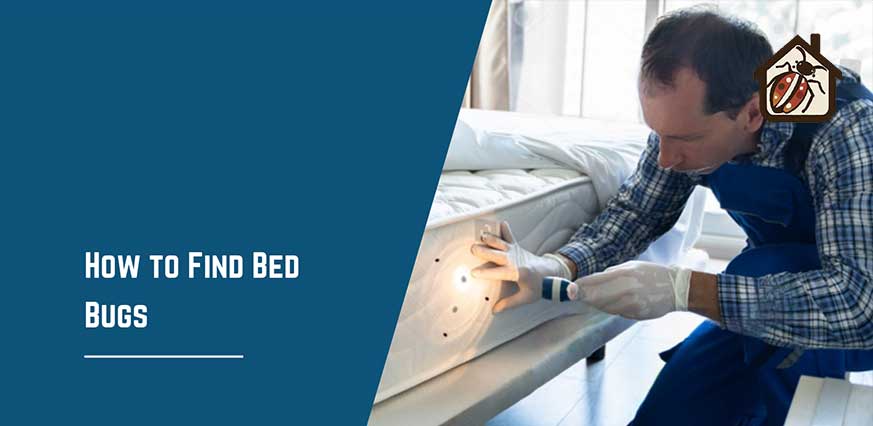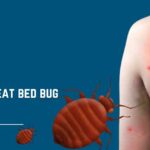
How to Find Bed Bugs
Lately, there’s been a lot of worry about bed bugs sneaking into homes. These tiny pests are tricky and can cause lots of trouble, making you feel uneasy and even costing you money. The good news is, if you catch them early, you can stop them from spreading and causing too much trouble.
This easy-to-follow guide will help you figure out how to find bed bugs. We’ll talk about the best way to check bed bugs’ favorite hiding spots and the signs they leave. By keeping an eye out and following these steps, you can take charge and get rid of bed bugs before they become a big problem. So, let’s start this journey together and find out how to discover and kick out these unwelcome guests from your home.
Understanding Bed Bug Behavior
Knowing how bed bugs behave is important to find and get rid of them. These little bugs are active at night and have habits that help them hide easily in our homes. This chart shows the main things to look out for in their behavior.
| Aspect | Description |
| Activity | Nocturnal |
| Hiding Places | Cracks and crevices in beds, furniture, walls, and personal belongings |
| Proximity to Hosts | Prefer to stay close to sleeping humans |
| Feeding Frequency | Feed every 3-7 days |
| Feeding Duration | 3-10 minutes per feeding |
| Blood Meal Size | 6 times their body weight |
| Life Span without Feeding | 80-140 days for nymphs, up to 550 days for adults |
| Temperature Preference | Warm environments (25-35°C) |
| Travel Distance | Can travel several yards to reach hosts |
| Signs of Infestation | Bites, fecal stains, shed skin, musty odor |
Visual Inspection of Common Hiding Spots
Bed bugs are notorious for their ability to hide in plain sight. Conducting a thorough visual inspection of common hiding spots in your bedroom is crucial for early detection and preventing an infestation from escalating.
- Checking the Mattress and Box Spring
Examine the edges and corners of the mattress, looking at seams, folds, and piping. Pay close attention to these details. Use a flashlight to inspect the tufts and buttons on the mattress, as they can be hiding spots for bed bugs. Look at the underside and sides of the box spring, focusing on any tears or loose threads in the fabric.
- Examining the Bed Frame and Headboard
Scrutinize all cracks and crevices on the bed frame and headboard, including joints, screw holes, and decorative elements. Flip over the mattress and box spring to check the wooden slats for any signs of bed bug activity. Carefully examine the headboard upholstery, paying particular attention to seams, folds, and tufts.
- Inspecting Nearby Furniture
Check the seams and frames of other furniture, paying close attention to cracks and crevices. Examine the fabric on cushions, armrests, and backs of furniture for any signs of bed bugs. Move the furniture and inspect behind and underneath to ensure there are no hidden signs of bed bug activity.
- Checking Baseboards and Walls
Examine cracks and crevices along baseboards and walls, especially near furniture. Remove electrical outlets and switch plate covers to inspect the space behind them for any signs of bed bugs. Carefully remove wall hangings and pictures to inspect the areas behind them, ensuring a thorough examination.
How to find bed bugs using a flashlight and magnifying glass?
Flashlight Magic
- Shine it right: Use a strong flashlight, like an LED, to light up dark spots under furniture and behind things. This light can make bed bugs come out of hiding and be easier to see.
- Angle it smart: Shine the flashlight from the side to create scattered light. This can show shadows and odd shapes where bed bugs might be hiding.
- Double-check with care: Don’t only trust the flashlight. Use a credit card or something thin to gently check suspected spots. It can help bring any hidden bed bugs into the light.
Magnifying Glass Help
- See tiny things: Bed bug eggs are super small, like a pinhead, and young bed bugs are just a bit bigger. A magnifying glass makes things look 2-5 times bigger, helping you see these tiny bugs and know if there’s an infestation.
- Get it right: Bed bugs look like other bugs, such as carpet beetles. A magnifying glass lets you look closer at their special features, like their flat, oval bodies and reddish-brown color. This way, you can be sure it’s a bed bug.
- Change the zoom: Some magnifying glasses let you change how much you zoom in. Use a 2x zoom for a general look, and a 5x zoom for finding tiny eggs and young bugs.
Look for them in Furniture
Bed bugs love hanging out in the bedroom, but they don’t always stay there. They can sneak into your home’s other parts, especially furniture and upholstery. To make sure you catch them all, you need to inspect these hiding spots carefully.
- Seams and Folds: Check where the cushions, armrests, and backs have seams and folds. Bed bugs like to hide there.
- Cushions: Take off each cushion and look at the undersides and edges. Bed bugs might be hiding inside the stuffing or padding.
- Wooden Frames: Look closely at the wooden frames of your furniture. Bed bugs could be in cracks and crevices there.
- Folds and Pleats: Examine the folds and wrinkles of your curtains, especially near the wall or furniture.
- Headings and Hems: Check the top parts (headings) and edges (hems) of your curtains. Bed bugs might be hiding there.
- Behind and Underneath: Pull back the curtains and check behind them, including the wall and window frame.
How to look for bed bugs?
- Room by Room: Look at one room at a time, checking all the furniture and upholstery.
- Top to Bottom: Start from the top of the furniture and work your way down, including the legs and underneath.
- Use Light and Magnification: Grab a bright flashlight and a magnifying glass. Shine the light into dark areas and use the magnifying glass to spot tiny bed bugs eggs and young bugs.
Learn how to Implement Bed Bug Detection Devices
Visual inspection is a crucial first step in finding bed bugs, but using bed bug detection devices can boost your chances of success. These tools provide an extra layer of assurance, helping spot hidden infestations early on and allowing for swift intervention.
Types of Devices:
Interceptors: Passive traps that fit under furniture legs. Bed bugs fall in and get stuck, clearly showing their presence.
Lure Traps: Active traps emit heat and carbon dioxide to attract bed bugs. Bugs get trapped inside and are easily identified.
CO2 Monitors: Detect carbon dioxide, indirectly indicating bed bug presence. Bed Bug Detectors are handheld devices that use heat sensors to identify bed bugs by their body heat.
What is the purpose of using a bed bug detection device?
Early Detection
Identifies infestations before visible signs like bites appear. It enables prompt action to prevent further spread.
Monitoring Infestations
It tracks treatment effectiveness by counting captured bed bugs. Valuable information for assessing progress and adjusting treatment strategies.
Locating Hiding Places
Strategic placement helps pinpoint active hiding areas. And also enables targeted treatment efforts for effective control.
What Are Signs of a Bed Bug Infestation?
These are ways, how to find bed bug infestation:
| Sign | Description |
| Bite Marks | Clusters of itchy, red welts, often in a straight line or zigzag pattern, appear on exposed skin after sleep. |
| Blood Stains | Small, rusty, or reddish stains on sheets, mattresses, pillowcases, and furniture where bed bugs have been crushed. |
| Fecal Stains | Dark brown or black spots, about the size of a period, are found on mattresses, bedding, and near-bed frames. |
| Eggs and Eggshells | Tiny, pale yellow eggs (about 1mm) and shed nymphal skins are found in clusters on mattresses, seams, and crevices. |
| Live Bed Bugs | Flat, oval-shaped insects about the size of an apple seed, reddish-brown in color, visible to the naked eye. |
| Musty Odor | A sweet, musty smell, similar to almonds or coriander, emitted by bed bugs and their droppings. |
| Cast Skins | Translucent, yellowish-brown husks shed by nymphs as they grow. |
You may also like:
FAQs
1. What are the signs of a bedbug infestation?
2. Where are bed bugs most likely to be found?
3. What tools can I use to help find bed bugs?
4. How do I inspect my home for bed bugs?
5. What should I do if I find bed bugs?
6. How long does it take to get rid of bed bugs?
7. What can I do to prevent bed bugs?
8. Where can I find more information about bed bugs?
Conclusion
Bed bugs can become a serious problem if not identified in the early stages. They not only bite and cause allergic reactions but, also cause mental distress. Over time, they breed and infest your household which becomes a hygiene issue.
This is why you need to learn how to identify if your home is bed bug-infested or not. If the signs point towards infestation, be sure to act quickly


